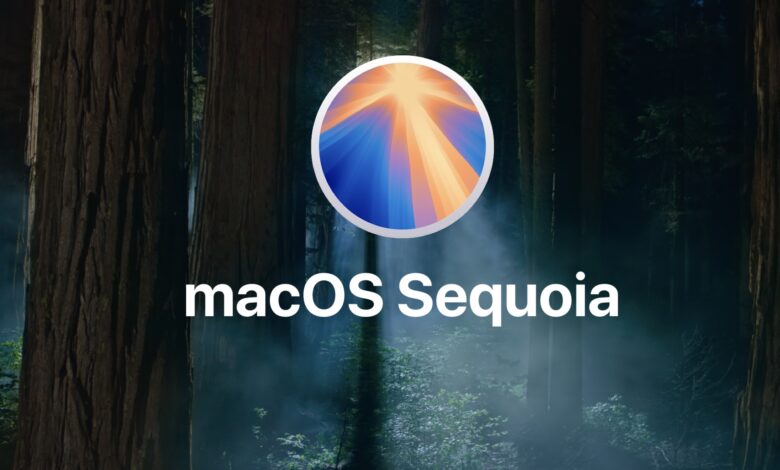
High-volume work on macOS quickly exposes the limits of single-window navigation. Projects spread across multiple folders, network shares, and remote hosts demand consistent structure, reliable feedback, and fewer context switches. That is precisely where a specialized tool proves its worth. Commander One delivers a focused, two-pane workspace that reduces friction in daily operations while keeping familiar macOS habits intact. The result is a disciplined environment for copying, moving, comparing, packaging, and deploying files – without juggling stacks of Finder windows or bouncing between separate utilities.
The appeal of a specialized file manager for MacOS is straightforward: show both source and destination, keep actions predictable, and integrate local drives, servers, and cloud locations in one view. For teams that value steady execution over flash, this design is easier to adopt, easier to teach, and easier to trust. It also aligns with the way modern work actually happens, across devices, accounts, and services, while preserving a tidy, readable interface.
Why the two-pane approach transforms everyday work
Two panes put context at the center of every decision. With source and target visible, routine actions become deliberate: select, verify, execute, and confirm – no guesswork about “which window is active,” no dragging files into the wrong tab. Folder comparisons feel natural because visual differences stand out side by side, and repetitive transfers stop consuming attention.
The improvement is most obvious during multi-step tasks. Renaming batches, staging assets for a release, synchronizing a set of documents, or pruning duplicates are all faster when both locations remain in view. Mid-sentence, it’s practical to place an anchor for readers who want to validate this layout on a real project: moving from single-window navigation to Commander One keeps the learning curve short while immediately reducing window-hopping. Because the interface stays stable, muscle memory forms around a handful of gestures and hotkeys rather than around a maze of overlapping windows.
A dual-pane file manager Mac users can rely on also improves safety. Visibility lowers the odds of overwriting the wrong folder, and queued operations plus clear progress indicators encourage calm, stepwise execution. In busy environments, that predictability is as valuable as raw speed.
Commander One at a glance
Commander One is designed as a Finder alternative for tasks that outgrow single-window browsing. The application keeps two panes open by default, supports unlimited tabs, and respects macOS conventions for navigation and selection. It scales from simple sorting to professional scenarios involving archives, networks, and remote servers – all without fragmenting the workflow across multiple apps.
Two editions are available. The free edition covers the fundamentals for daily organization. The Pro edition extends the toolkit with connections and automations that matter to development, creative, and IT teams. This split gives organizations an easy on-ramp while preserving a clear upgrade path when remote and cloud use cases become standard.
Capabilities that matter in practice
Two panes with tabbed navigation. Keeping both locations visible reduces context switching; tabs save deep paths and project roots, which shortens the journey through complex directory trees.
Archive handling that behaves like browsing. Open compressed archives as if they were normal folders, inspect contents, and extract only what is needed. Partial extraction avoids clutter and saves time.
Integrated connections. An embedded FTP client Mac administrators can operate inside the same window turns remote servers into routine stops rather than separate destinations. Credentials, bookmarks, and transfer feedback live beside local folders.
Cloud in the same workspace. Popular services appear as mounted locations, so transfers feel consistent. That cloud storage integration Mac teams expect keeps on-device libraries and shared assets aligned without a parade of helper apps.
Search that scales. Target filenames and content with filters and patterns, then act on the results immediately. When deadlines are tight, exact discovery beats manual hunting.
Customization without chaos. Shortcuts, favorites, themes, and layout tweaks adapt to personal or team standards while staying discoverable. The aim is steady acceleration, not novelty for its own sake.
Responsive feedback. Progress bars, queued operations, confirmations, and error messages are easy to read. Clear feedback loops are essential when multiple transfers run in parallel.
Free vs. Pro: choosing the right scope
The free edition is suited to focused local work: reorganizing folders, preparing deliverables, cleaning archives, and learning the two-pane rhythm. The Pro edition extends Commander One into a full operations console: connect to servers via the built-in FTP client Mac workflows rely on, bring cloud drives into the same view, and apply deeper search or archive options. Many teams standardize on Free for general users and adopt Pro for roles that touch infrastructure or shared storage daily. Pricing and bundles can vary over time; checking inside the app or on the official site ensures the latest details without relying on outdated figures.
 How it compares with Finder and other tools
How it compares with Finder and other tools
Finder remains excellent for previews, quick peeks, and light tasks. Its constraint is scale. Intensive re-organization, repeated transfers, and cross-location comparisons demand fewer clicks and steadier structure than a single window provides. A Finder alternative like Commander One addresses that gap with a two-pane default, predictable shortcuts, and integrated connections.
Other utilities offer strong capabilities as well. Some emphasize extensive customization, while others foreground visual polish and broad protocol support. Commander One differentiates by balancing clarity with depth: the interface stays tidy, yet the toolkit covers the needs of developers, designers, and administrators who live in mixed local/remote environments. This balance is why it regularly appears in shortlists for best file manager Mac decisions, where stability and speed matter more than novelty.
Typical scenarios
- Release preparation. Place build output on one side and the destination on the other, verify differences at a glance, and copy only the changed items.
- Content curation. Keep a master library opposite a working set, move selects as editing progresses, and archive extras without losing oversight.
- Server maintenance. Use the integrated FTP client; Mac teams prefer to adjust configurations or pull logs, then drop results directly into local folders for review.
- Mixed storage. Treat on-device directories and cloud buckets as adjacent locations. The cloud storage integration Mac users expect makes handoffs to shared folders feel as ordinary as local moves.
Each scenario benefits from the same core pattern: two panes, clear intent, and immediate confirmation.
Setup guidance for a smooth start
Adoption is fastest when the layout supports existing habits. Pin active projects as tabs, place frequently used destinations in the opposite pane, and map only a handful of memorable shortcuts. Start with small transfers to confirm expectations, then scale up to larger batches. Introduce a single cloud service before adding more, and confirm how sync behaviors interact with team policies. These simple conventions make the interface feel natural without a long ramp-up.
For teams, consider a shared baseline: a minimal set of hotkeys, a standard arrangement for panes and tabs, and documented steps for staging and verification. Lightweight standards make collaboration smoother while leaving room for personal preferences.
Practical strengths behind the interface
The apparent simplicity of Commander One hides a set of choices aimed at reliability:
- Consistency over surprise. Common actions behave predictably, which lowers cognitive load during repetitive tasks.
- Visibility over guesswork. Two panes plus readable progress indicators keep “what is happening” obvious at all times.
- Integration over fragmentation. Local folders, network shares, remote servers, and cloud drives share one workspace, so attention stays on the task rather than on window management.
- Speed without clutter. Keyboard-friendly navigation coexists with clear menus, allowing both new and expert users to move quickly.
These traits are small on their own; together they produce calmer, faster sessions – precisely what a dual-pane file manager Mac professionals choose is supposed to deliver.
Frequently asked questions
Is Commander One free?
Yes. The free edition covers the essentials for two-pane navigation, tabs, archive browsing, and customization. The Pro edition adds remote connections, cloud services, and advanced options suited to professional environments.
Does it support cloud services?
Yes. The Pro tier includes the cloud storage integration Mac teams rely on, surfacing popular providers as locations inside the same interface.
Does it replace Finder?
It functions as a Finder alternative for heavy work while coexisting with Finder for quick previews and lightweight tasks.
Who benefits most?
Developers, designers, content producers, and IT administrators who routinely move files between local, remote, and cloud locations. Power users who prefer one structured window over multiple floating windows will also appreciate the approach.
Focus, structure, and fewer missteps
Complex file operations demand tools that protect attention. Commander One organizes that work in a single, consistent window. The default two-pane layout cuts down on misclicks and detours; the integrated FTP client Mac environments require keeping server interactions close to local files; and the cloud storage integration Mac teams expect prevents context switching during handoffs. For organizations comparing options in the best file manager Mac conversation, the case for Commander One rests on clarity: fewer windows, clearer intent, and steadier execution.
The recommended next step is simple: install the free edition, rehearse the most common tasks inside the two-pane layout, and add the Pro capabilities when servers and shared cloud drives become part of daily routines. With a measured learning curve and a strong emphasis on predictable behavior, this file manager for Mac offers professional depth without unnecessary complexity.

 How it compares with Finder and other tools
How it compares with Finder and other tools


